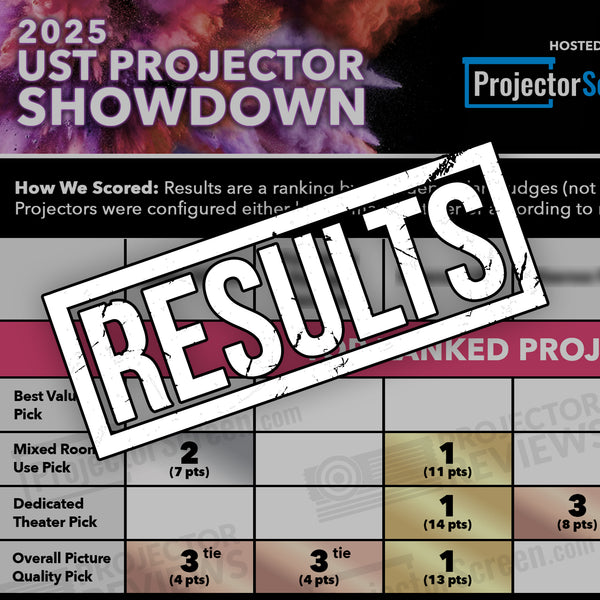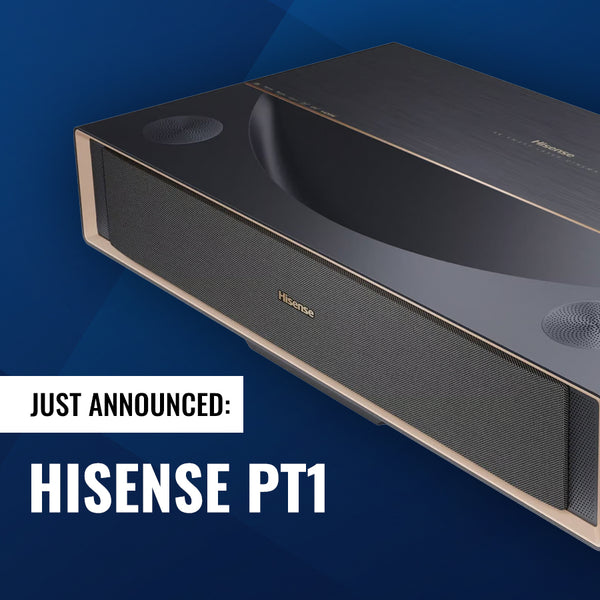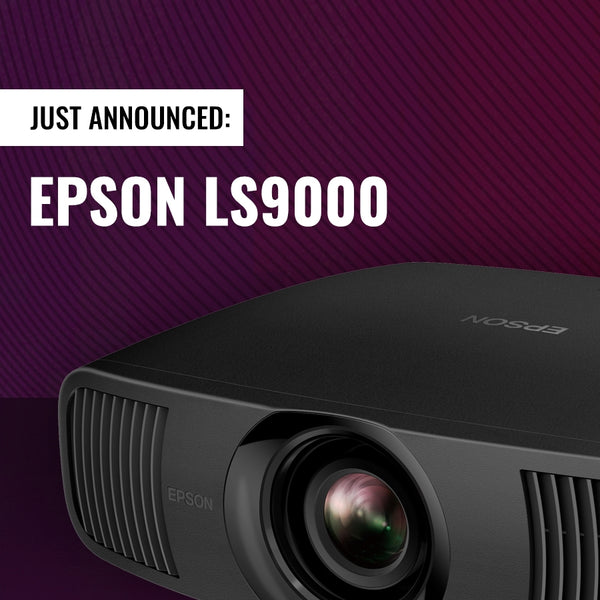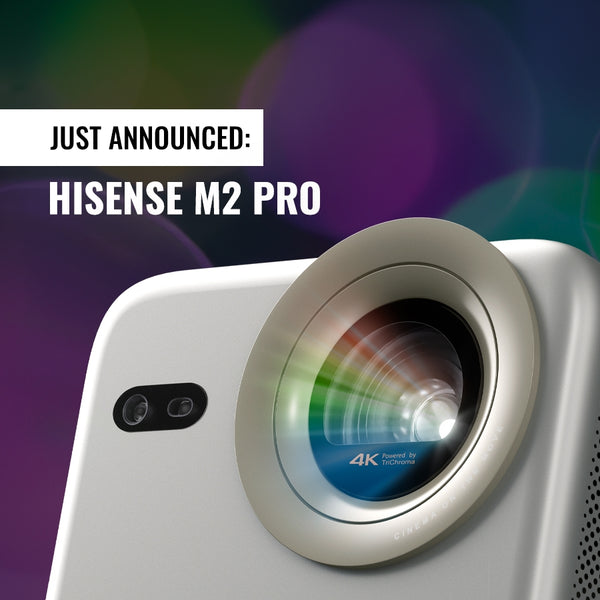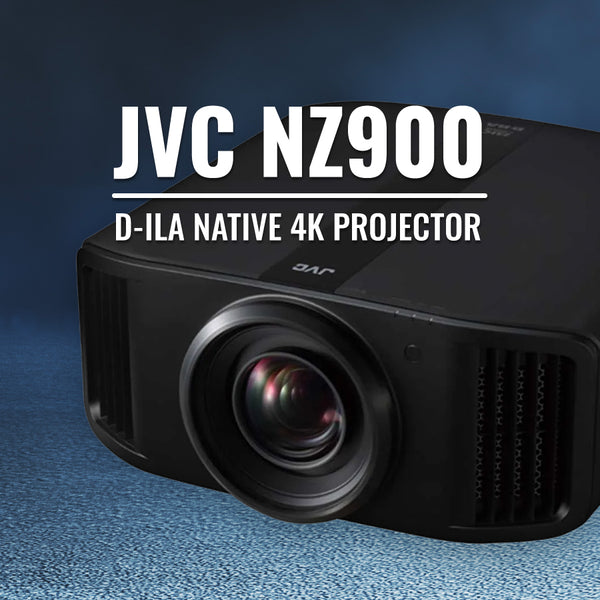Lenticular Projector Screen Vs. Fresnel Projector Screen for Ultra Short Throws

Which type of ambient light rejecting screen should you get?
To get the absolute best picture from an ultra short throw projector, even in a room with ambient light, you need to get a projection screen specifically made for UST projectors (aka laser TV). Ultra short throw screens have a number of properties that make them the ideal pairing.
UST screens are typically gray to give you more dynamic blacks and are lower gain to prevent hotspotting from the beamer sitting directly under the screen. They’re also Ambient Light Rejecting. This means the surface of the screen is engineered to reflect the light from the projector to the viewer, while reflecting the light from other sources away from the viewer. This gives you a clear bright image on your display even in well-lit rooms.
There are three types of ambient light rejecting surfaces for projector screens: angular reflective, lenticular (aka black grid) and fresnel.
When it comes to laser TVs, the only options are a lenticular screen or a fresnel screen. This is because angular reflective screens work by reflecting the ambient light at more extreme angles while allowing the light from the projector to show. This won’t work with an ultra short throw because the projector sits directly under the screen, the light from the laser TV would bounce off the screen and display the image on the ceiling.

So for ultra short throw projectors the choice is between a lenticular projector screen and a fresnel projector screen.
Lenticular Projector Screens
A lenticular ALR screen utilizes special technology so the surface of the display features tiny downfacing grooves like a zipper.

The flat part on top uses a black surface and absorbs/rejects the ambient light. (This is why they’re also referred to as black grid screens)The white angled bottom reflects the light from the projector to the viewer. The light from the projector is projected from bottom to top on the white reflecting layer and then reflected into our eyes. The interfering light from above will be absorbed by the black parallel layer.

If you were to stand on a ladder and look down on the screen it would look darker, almost black. And if you look from below the screen it would look much lighter.
Fresnel ALR Screen
The other type of UST display is a Fresnel surface.
A Fresnel structure uses the convergence principle of the concave mirror. It divides a concave surface into a circular structure and then flattens the circles so they’re a single plane. This allows the light to be focused on a specific point. This is why you see fresnel lights in studios and film sets.

Similarly to a fresnel light, a fresnel projector screen uses the concave structure divided into semicircles. The screen surface is full of semi-circular lines from large to small. This semi-circular structure is only receptive to the projection light from below the center of the circle while rejecting light coming from the surrounding environment. This includes ambient light from the sides.

If you look very closely at the surface of the screen you can see the individual curved lines. Similarly to a lenticular movie screen, if you look from the below the surface will appear lighter while from above it will look darker. However the contrast isn’t as pronounced on the fresnel screen as it is on the lenticular screen.
Which is better for an ultra short throw projector, a lenticular screen or a fresnel screen?
Different surface structures have different effects on the viewing experience. Each one has its own pros and cons. So what are the advantages and disadvantages of each.
Brightness and Screen Gain
Generally, the gain of a lenticular screen with black-grid structure is around 0.4-0.6. This is largely due to the gray or black surface of the screen.
Because of a fresnel screen’s semicircle structure, the surface focuses the light more back to the viewer making the gain of the best viewing angle to a screen gain of 1.0. This is despite having a dark gray surface so you get a brighter image while still maintaining more accurate blacks and preventing hotspotting.
Viewing Angles
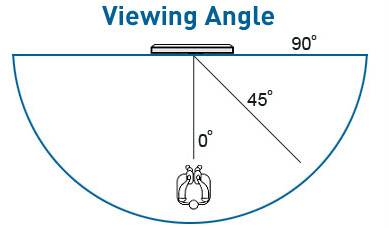
While the fresnel cinema screen offers more brightness, it only offers that brightness at the optimal viewing angle. Sit outside of that visual cone and the picture quickly becomes duller and more washed out. The semi-circular structure seriously narrows the optimal viewing angle.
Thanks to the parallel prism structure of a lenticular screen surface, a black grid screen offers a near 180 degree viewing angle. So just about no matter where you sit in front of a lenticular movie screen you’ll see an equal amount of brightness.
Dealing with Ambient Light
With regards to ambient light coming from the ceiling above the projector screen, both screens do a good job.
When it comes to ambient light from the sides however, the fresnel screen does a better job rejecting the light from the environment.
Reflecting the Projector
One of the major downsides of fresnel cinema screen is that it’s higher gain causes the light from the projector in addition to being focused at the viewer is also reflected off the screen at weird angles. When using a fresnel surface with an ultra short throw projector you’ll wind up with a ghost image on the ceiling. In addition to this, if you’re sitting outside the viewing angle you’ll see the light source itself coming from the projector.
Durability
A fresnel surface is less likely to get damaged because they have a clear coating on them protecting the ridges.

A lenticular screen on the other hand can be damaged if the screen is handled roughly or scratched in a vertical motion. Once damaged the surface can’t be repaired.
Option of Soft Screen or Hard Screen
A hard screen is a fixed frame cinema screen that can’t be rolled up. A soft screen on the other hand can be rolled up without damaging the surface.
Because of the thin layer of clear resin on the screen, a fresnel screen only comes as a pre-assembled fixed frame screen.
A lenticular cinema screen can be made as either a fixed frame or a retractable ceiling screen. This gives it more versatility to be put in your living room.
So which is better? A fresnel or a lenticular screen?
Now that you have a better understanding of the differences between fresnel projector screens and lenticular projector screens, which do you think is better?
We’d say in almost every situation the lenticular screen is the better choice. Ultra short throws are made to be used in a living room. The narrow viewing angle of the fresnel screen disqualifies it because in a living room situation where you have a bunch of people sitting on different couches, everyone should be able to see a crisp clear picture. The fresnel screen just doesn’t allow for it. This combined with the hard screen limitations and reflected image on the ceiling make it not the best option for a laser TV.

